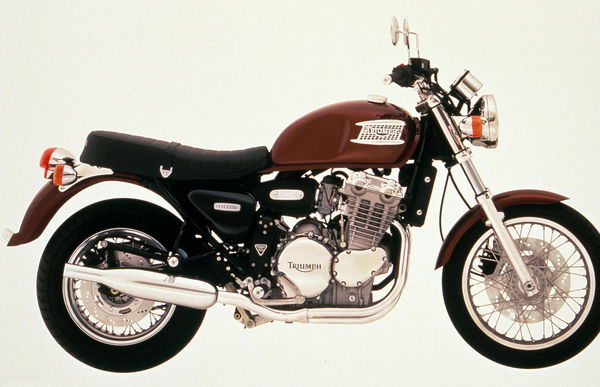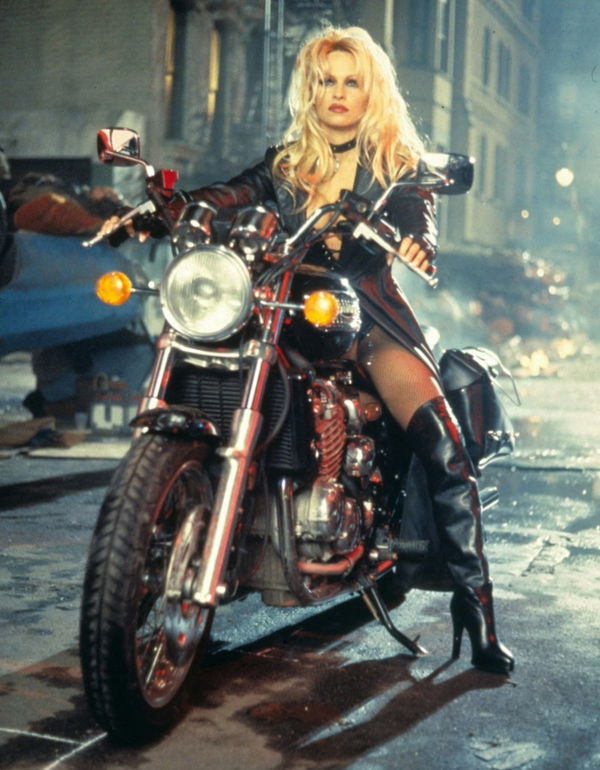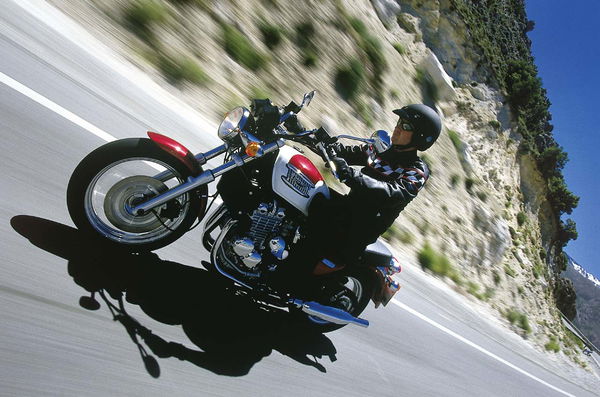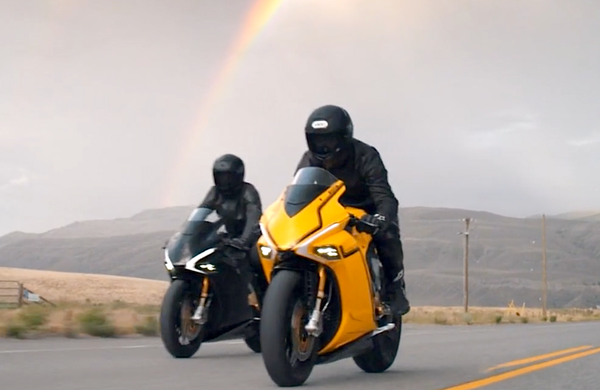How 25 years of Triumph retros transformed British brand
How Triumph Thunderbird 900 helped transform the British marque's fortunes into becoming one of the world's biggest motorcycle brands today

With the news this week that Triumph is to revive another of its historic model names – Trident – it’s timely to note that it was 25 years ago this year when the reborn marque originally exploited its heritage by building its first ‘retro’ – the type of bike with which it’s a world leader today.
That bike wasn’t the Bonneville, the nostalgia-fuelled twin launched in 2000 as inspired by the Meriden Triumphs of the 1950s and ‘60s that would prove so successful its spin-offs form the bulk of Hinckley Triumph’s output today – but the less well-remembered Thunderbird 900.
And it’s the Thunderbird, by being Triumph’s first ‘retro’ and by proving a huge success, particularly in the vital and vast US market, which thus claims the credit for being the most significant and influential modern Triumph of all.
Although Triumph’s relaunch was a success following John Bloor’s purchase of the name and manufacturing rights after Meriden’s collapse in 1983 and its subsequent relaunch with six all-new, modern, modular machines at the 1990 Cologne Show, in the early 1990s production numbers were still very small and its range of bikes conspicuously conservative – bland even.
By 1993 the Hinckley factory had yet to build its 10,000th bike (today it regularly makes 60,000 annually) and its Trophy, Daytona and Trident models, though worthy and robust, were considered fairly dreary – particularly in the vital overseas markets.
But a change in direction in 1992 plus important new facilities such as an in-house paint shop, would not only result in a series of more characterful models (first the Tiger 900 in 1993, then the Speed Triple in 1994 then, crucially, the Thunderbird in 1995) but would also help fuel a boost in sales and production that totally transformed the company. By 1995, Triumph was making 12,000 bikes a year. By 2000, with the launch of its second retro, the popular Bonneville 800, it broke even for the first time. It wasn’t a coincidence.
Triumph’s then export sales manager, Michael Lock, remembers the period well:
“It became clear to me quite quickly that Triumph was, on the one hand, this heritage soaked, evocative name, that got generations of guys hot and sweaty – and that was what John bought,” Lock said recently. “But then what he made was this very modular, very engineering led, not evocative motorcycles.
“What John wanted to do was kill the old image of Triumph that they were unreliable. That was his first goal – and he was right. But in doing that and in going for the modular system with the three and four cylinder engines the bikes were very anonymous.
“I was responsible for export sales and all of our European partners, who loved the brand, were saying ‘It doesn’t look very Triumph. It’s really difficult to sell it in Italy and Germany because what they don’t want is a Kawasaki made in England, they want a British brand, a British bike.”

The Speed Triple, a modern café racer developed from the Daytona but with a sprinkling of nostalgia, was the first result and proved an instant hit. But more, much more was to come.
With its entry into the US market slated for 1995 Triumph wanted a new marquee model that would grab American attention like no other: the idea was for a retro or heritage styled machine that would evoke memories of Triumph’s heyday in the US in the 1950s and ‘60s but based on existing, modern mechanicals. The name they’d give it would be that of one of Triumph’s most successful machines in the US in the 1950s – and that which no less than Marlon Brando had ridden in the movie The Wild One – Thunderbird.
And although the Thunderbird would, like the Speed Triple, be based on Triumph’s already popular 900 triple, in this case the Trident 900, for this key model the Hinckley firm also went far, far further in terms of customising and getting the look ‘just right’.
So, although the ‘T-bird’s basic frame and engine architecture were Trident, everything else was brand new: The 900 triple was not only detuned for more cruiser-style torque, it was given a lazier, five-not-six speed gearbox. Externally it was all new, too, with more curvaceous engine cases and cylinders which, while still water-cooled, were intended to resemble the air-cooled ‘Trumpets’ of yore. Classic ‘pea-shooter’ exhaust pipes were added; there was a new, bespoke ‘teardrop’ fuel tank and matching bench seat while wheels were wires.
Nor did Triumph scrimp on its new ‘baby’s spec. Although later versions showed signs of cost-cutting, the original 1995 T-bird boasted proper polished alloy engine cases rather than chrome and its wheel rims were pukka alloy Akronts not the later chromed steel.

And the result, as Triumph hoped for, proved a big success Stateside, fuelled further by its appearance in the Pamela Anderson film Barb Wire. That success, plus that, to a lesser degree, of its more extreme cruiser sister, the Adventurer, led to further incarnations: in 1996 it got a cheaper, oval swing arm with other changes in 1997 and 1998. A sportier version, the Thunderbird Sport, came in 1997 while the more basic, affordable Legend TT was introduced in 1998.
And although the Thunderbird 900 would live on for almost a decade, right up to 2004, as the new Millennium approached, with Triumph established in the US and profitability and the new Bonneville on the horizon, it’s job had been done. The T-bird had not only proven that retro Triumphs were a good idea – although Triumph can’t actually claim to have come up with the retro idea, per se, being predated by Kawasaki’s Zephyrs in 1990 – it had helped define the company’s whole style and attitude.
Today, while the latest Bonnevilles – all 10 of them, ranging from 900 to 1200cc and from Bobber to Scrambler to café racer and more – dominate Triumph’s range and form the backbone of its brand, the original Thunderbird 900 remains an in-demand used buy with good examples easily fetching £4K-plus. And, with their characterful three-cylinder delivery, typically good Triumph handling, great looks, quality components and finish and proven durability it’s not hard to see why…
Fun Fact
The Thunderbird name, as first applied to a US-targeted Triumph 650cc cruiser from 1949, was chosen when legendary general manager Edward Turner, on a trip to Daytona Beach from New York, chanced upon the Thunderbird Inn in Florence, South Carolina and thought the name perfect for Triumph’s newest model. It still exists today.











